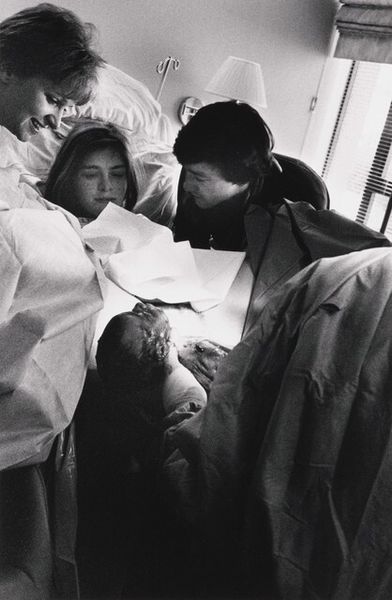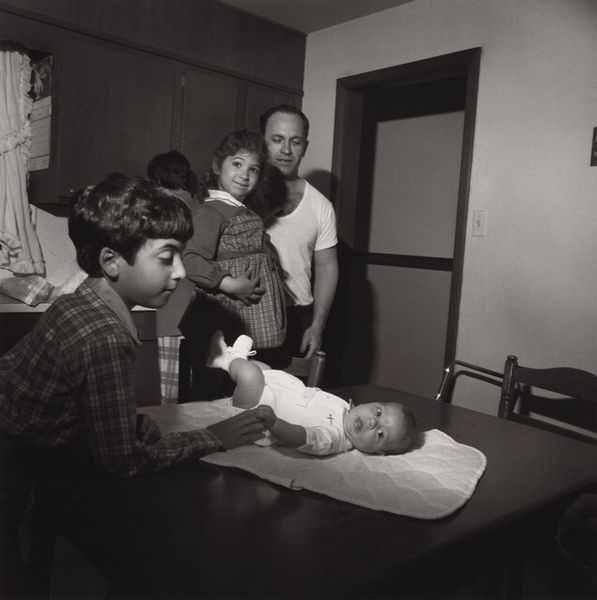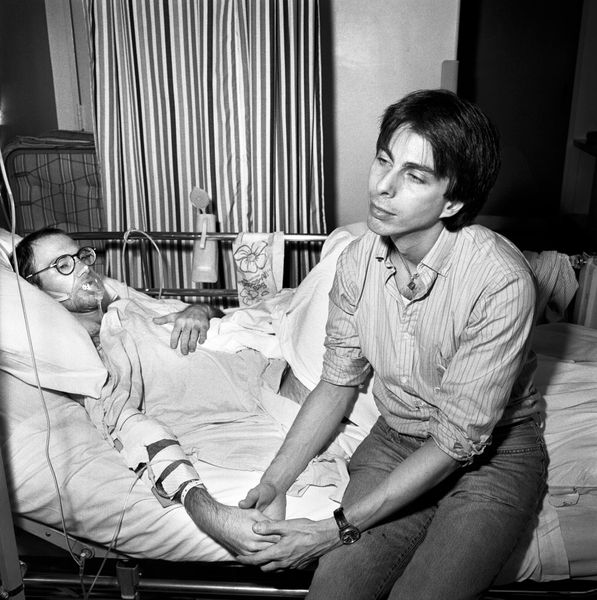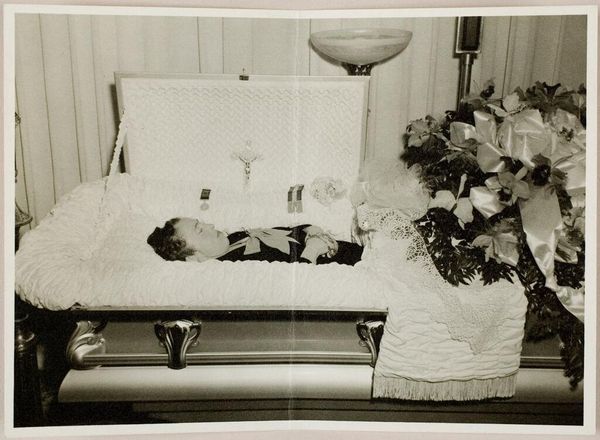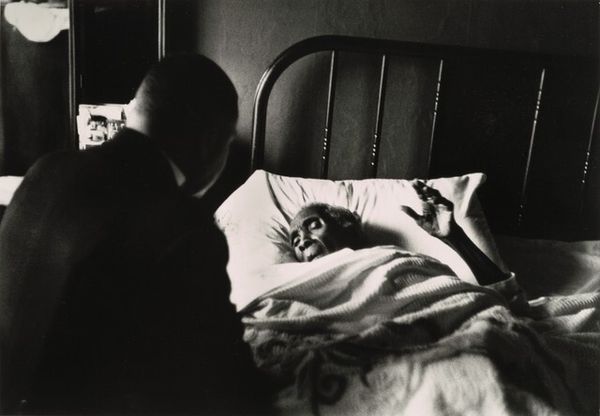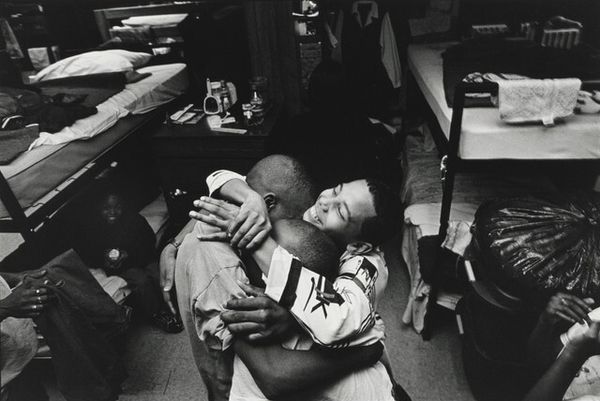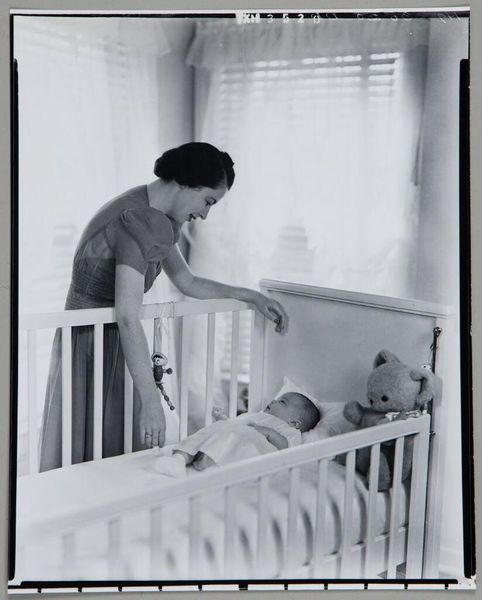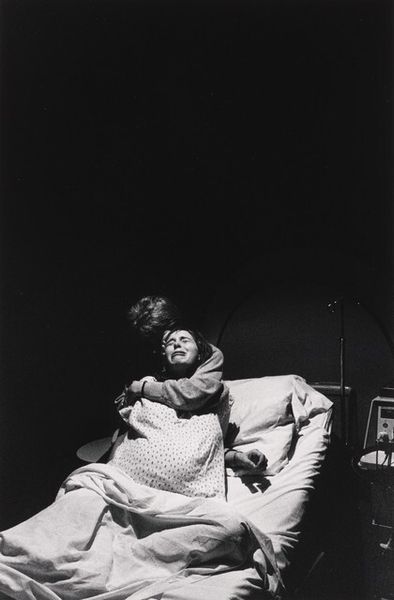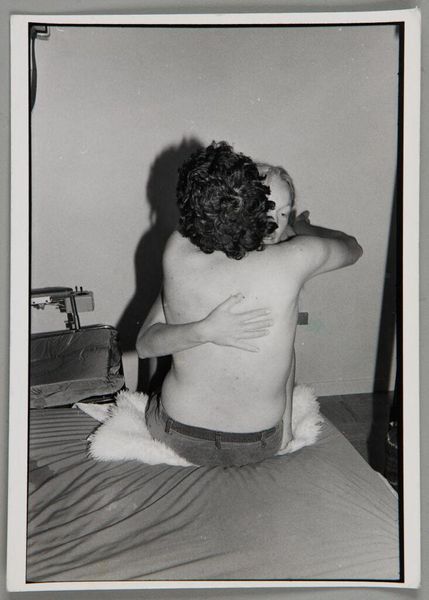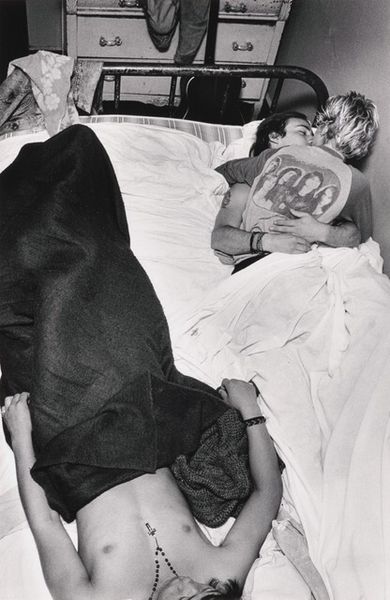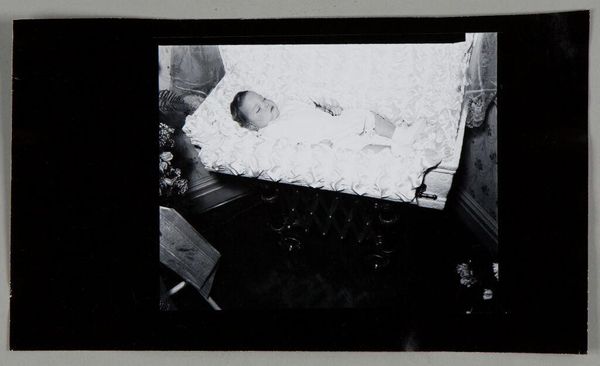
Boston (Sharon Morrison, a nurse with the Family Team at Boston Health Care for the Homeless Program, has a special fondness and respect for this young mother and her daughter. She marvels at the calm and loving manner of the mother and the corresponding spirit of joy and playfulness in her child. The little girl is about to undergo emergency brain surgery to replace a shunt.) 1999
0:00
0:00
photography, gelatin-silver-print
#
narrative-art
#
black and white photography
#
photography
#
historical photography
#
gelatin-silver-print
#
monochrome photography
#
genre-painting
#
realism
Dimensions: image: 22 × 32.7 cm (8 11/16 × 12 7/8 in.) sheet: 27.9 × 35.4 cm (11 × 13 15/16 in.)
Copyright: National Gallery of Art: CC0 1.0
Editor: This photograph by Betsy Karel, titled "Boston," from 1999, presents a very intimate moment between a mother and child. The black and white tones create a stark, almost clinical atmosphere, yet there's a deep sense of connection and love in the mother's embrace. How do you interpret this work, particularly considering its title includes context about the Boston Health Care for the Homeless Program? Curator: This piece operates on several levels, prompting us to confront complex social issues. The very fact that the photographer specifies the context - a homeless program, the child's upcoming surgery - frames our viewing. Karel seems to be prompting viewers to recognize the dignity and inherent worth of individuals often marginalized by society. How does the work, in its realistic style, avoid becoming purely voyeuristic or exploitative, and instead offer a powerful narrative of resilience? Editor: That’s interesting. I initially saw it as just a touching moment, but thinking about the socio-economic context shifts the emotional weight. It feels like an intentional choice to combat invisibility. Curator: Precisely. This work asks us to consider how societal structures impact individual experiences of care, particularly for mothers and children facing adversity. The photograph is not simply a record of an event; it’s a challenge to dominant narratives, forcing us to acknowledge and empathize with experiences of homelessness and healthcare inequality. To what extent does Karel successfully navigate the fine line between bearing witness and potentially perpetuating stereotypes? Editor: I guess by providing very specific, compassionate details within the title, she allows the viewer to empathize with the specific humanity of the figures pictured. I had never really considered that an artwork title could carry such political weight! Curator: And that points to the power of photography as a form of social activism. Hopefully this exchange highlights the interconnectedness of artistic representation, social justice, and our own responsibility as viewers. Editor: Absolutely! I will think differently about context going forward. Thank you.
Comments
No comments
Be the first to comment and join the conversation on the ultimate creative platform.

